The world of New York’s Staten Island Ferry

Mail This Article
No city is an ‘urban jungle’. That’s a condescending and dismissive attribute. Every city is a human habitat and they’re full of both wonderful and not so wonderful things. A jungle is a wonderful place too, unless you take it for granted or disturb its citizens. When you call a city ‘urban jungle’ and belittle it, you’re condemning two fine habitats in one go: the jungle and the city.
I’ve been visiting New York – often described as an ‘urban jungle’ - off and on since 1988, and my fascination for the city only increases. Underneath the thousands of steel-and-glass columns soaring into the sky, life goes on pretty much like anywhere else, busy with the mundane details of making a living. Seen from the top of one of them, people and vehicles look like ants scurrying about in a valley of giant mountains.
The essential New Yorker is a person in a hurry but, I think, only as much as her Mumbai, Kolkata or Bengaluru equivalent, except that the styles are different. The New Yorker seems more intense whereas her Indian equivalent is more relaxed – perhaps Indian capitalism hasn’t grown enough to tighten the noose fully. The only people who do not hurry in New York are the elderly sitting on a park bench and watching life go by or the homeless who have nowhere to go. And, of course, the tourists. They hurry, but they hurry slowly. A mind-boggling 6.6 crore tourists descend on the city annually to walk amongst the steel-and-glass corporate cathedrals.
For me, the magic of New York is on the streets beneath the skyscrapers, and in the people-filled subway hidden away in the eerie subterranean tunnels beneath the streets. What New York’s Staten Island Ferry offers you is another magic: it’s a slice of New York that’s afloat. It is one of the most beautiful things of New York.
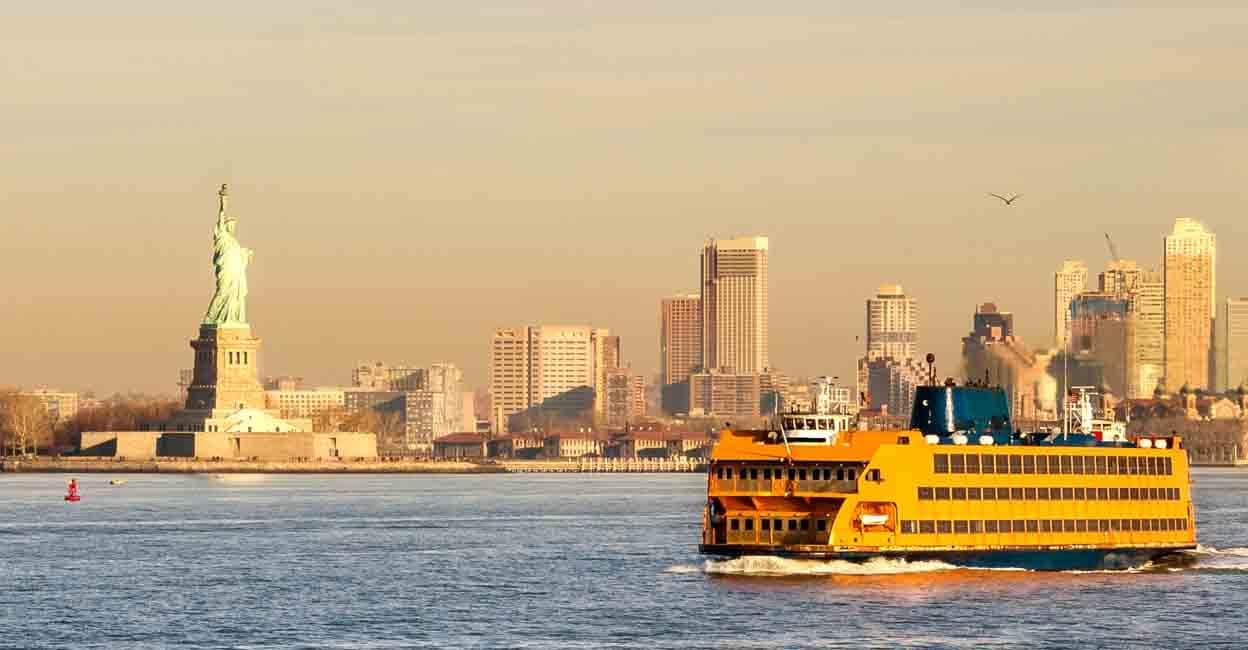
For those who’re yet to befriend the ferry, here’s a short description. It connects Lower Manhattan to Staten Island 8.4 kilometers away across the New York Harbor. It’s a 25-minute ride through the choppy waters of the East River estuary fed by the Atlantic Ocean tides. One could almost call the ferry everlasting, because at any given moment of night or day, spring, summer, autumn or winter, rain, shine or fog, there’ll be two huge, sleek municipal-orange-colored vessels cutting across the churlish waves, one proceeding to the island and the other to Manhattan. The service is 24 x7 x 365. And, believe it or not, it’s free. Yes, free! In the world’s biggest capitalistic society there’s something that’s free.
Here’re some tidbits about the ferry. It was started in 1905, long before the bridges came. The New York City Department of Transportation operates the ferry. It runs 117 trips a day using eight large vessels and two small ones, all named after prominent citizens of New York and Staten Island, and transports about 70,000 people daily between the St. George Terminal in Staten Island and the Whitehall Terminal in Lower Manhattan - around 2.2 crore people and 40,000 trips annually. The ferry’s annual on-time performance was 94 per cent at last count. In a history of 118 years, it has had had only one accident when, in 2003, the vessel Andrew J Barberi crashed full-speed into a concrete maintenance pier at the St. George Terminal in Staten Island, killing 11 people and injuring many.
I first boarded the ferry in 1992. Over the years I’ve been its loyal passenger many times. I’m indebted to my friend Manohar Thomas for introducing me to the ferry. His Staten Island home is my shelter in New York and that’s how I became a ferry faithful. I remember the first time he drove me to the ferry terminal and said, ‘Go in.’ ‘Where’s the ticket booth?’ I asked. ‘No ticket,’ he said. I couldn’t believe my ears. The United States of America was giving me a free ride!
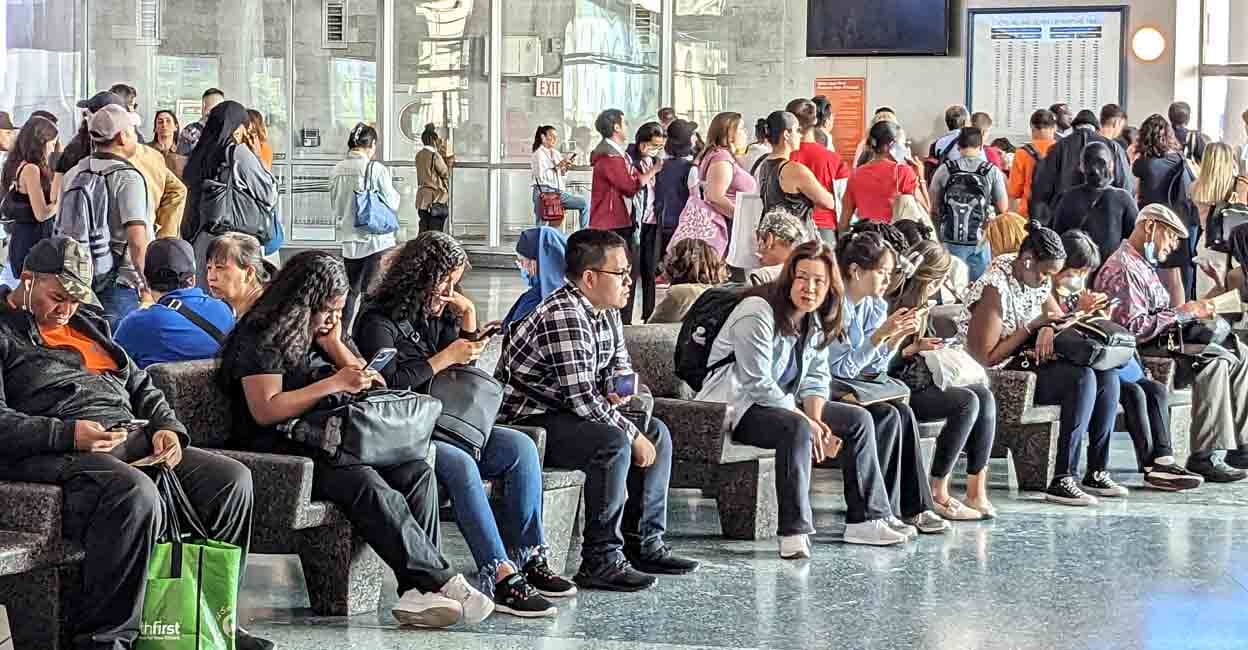
The waiting hall in the Staten Island Terminal is big and filled with people. There’s a couple of policewomen and men holding two cheerful labradors on leash and chatting and drinking coffee. Once in a while they’ll amble over to a passenger and request to have the luggage sniffed. After the sniffing the dogs have a fulfilled look and their tails wag happily. By now I must’ve seen 2-3 generations of the police and the dogs; may be some of the officers have become top bosses and the dogs must be relaxing in their Happy Hunting Grounds, but missing the sniffing.
The huge drawbridge that takes you into the ferry is operated by personnel standing on high platforms on either side, whose watch over the passengers never seem to waver. I’ve wondered about the immense gallery – stored in their heads - of images of the faces, gaits and manners of the never-ending flow of people who pass under their gaze day after day. It must be an extraordinary log-book of humankind.
The three-decked ship is vast and cavernous. The rows of seats are wide apart and there’s no cramping. Balconies open out on either side where you can stand and watch the world of New York Bay opening up around you. On the starboard Brooklyn comes into view as also the celebrated Brooklyn Bridge, followed by Governor’s Island further ahead. On the port side the Statue of Liberty appears like a dot in the horizon and soon it's in full view but still far. When it gets closer there’s a rush of tourists to the port side balcony holding up their phone-cameras. Next to it is Ellis Island, the place where during the 19th and early 20th centuries millions of immigrants from all over the world – the ones who created the America we know – landed, were processed and forwarded to their locations. (The National Museum of Immigration at Ellis Island is an unforgettable and heart-moving experience.)
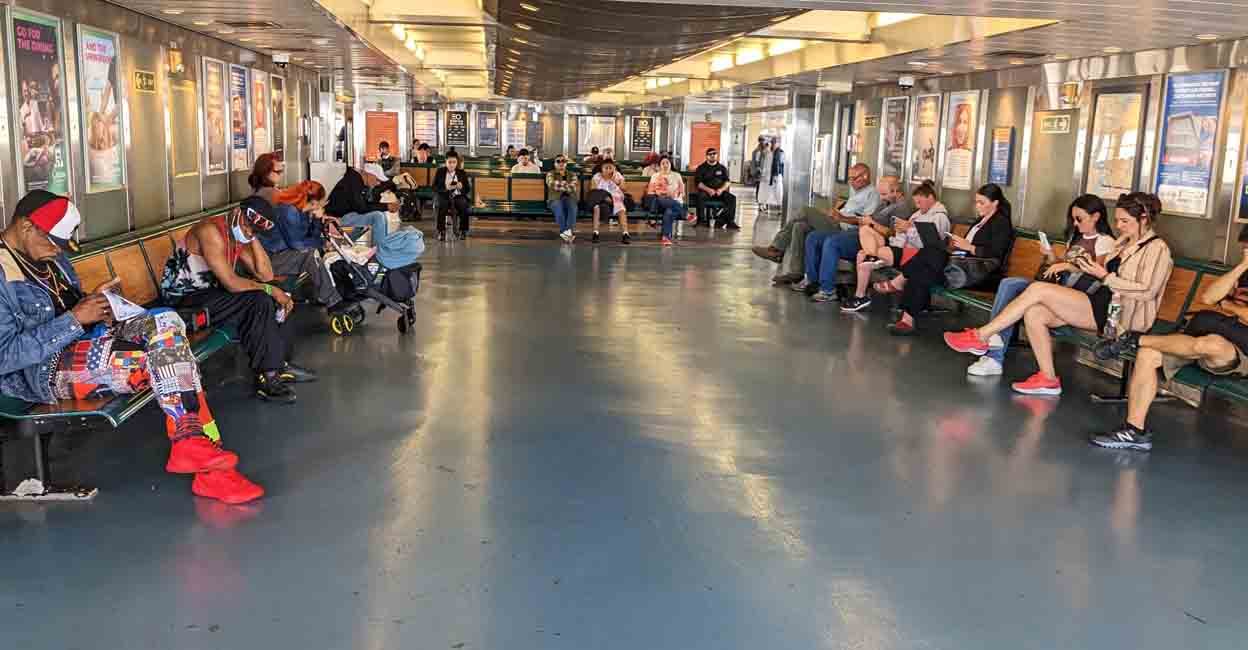
The waves are always choppy, whether the tide is coming in or going out. It’s scary to look at them. They are not high and appear to be dancing. But one can imagine how merciless would be their cold, undulating grip if you happened to get caught in them. Cruising all over the Bay are vessels of every kind, giant cargo ships heading for or leaving the harbour, tourist crafts, high-speed boats, luxury yachts, sailboats and little canoes where sits just one man with his fishing rod, impervious to everything, dreaming of his fish hiding down somewhere.
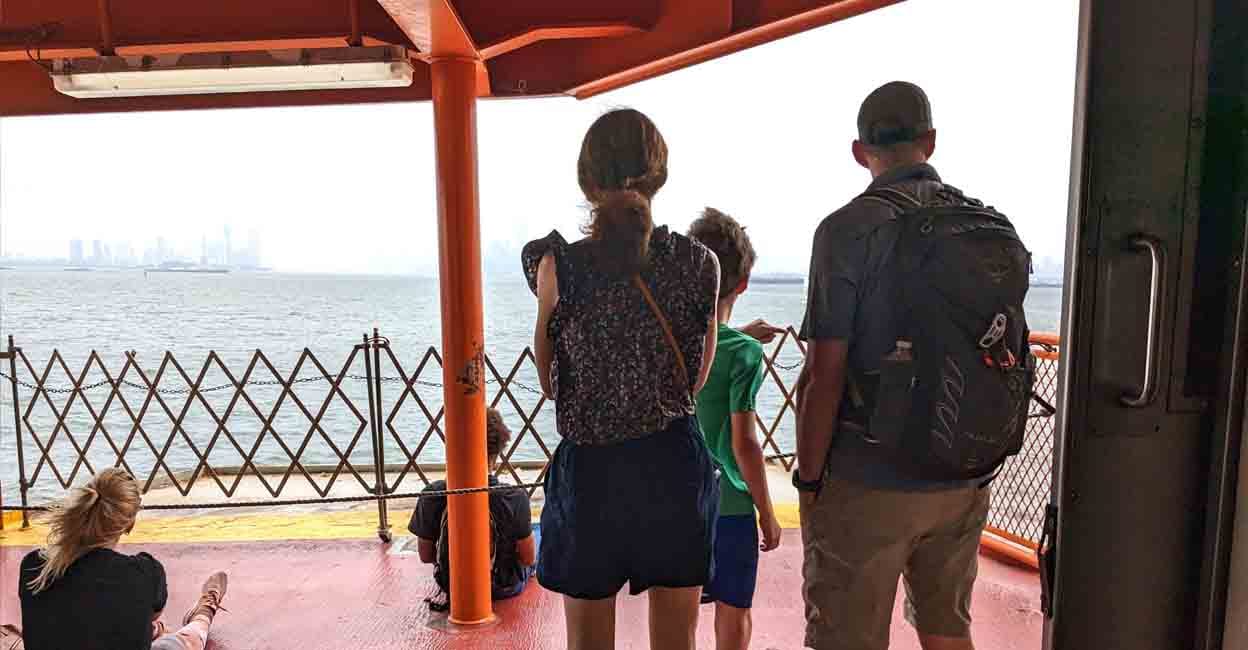
Then the Manhattan skyline begins to take shape at the other end of the Bay, starts to grow, become defined, grow bigger by every minute and then rushes at you like a glittering array of faery castles, their spires reaching for the sky. We know it’s a flamboyant display of power, wealth and domination. But it’s astounding. It’s breathtaking. New York appears before you in all its splendour. Then under the watchful eyes of the drawbridge operators you are offloaded into, what to me, is perhaps the most open-ended and intensely human urban conglomerate of the world. New York may be the HQ of the Masters of the Universe seated up in the skyscrapers, but city belongs to the ordinary people.

Back to the ferry. It’s a world in itself. Like New York it’s a melting pot of races, colours, languages, dresses, behaviours. For daily travellers, like commuters everywhere, the ferry is an extension of their home. There are even people who seem mentally ill – perhaps they’re in depression or under the influence of drugs – and use violent language and lurch around. No one seems to mind. I see Buddhist monks in their saffron robes, Hassidic Jews with their ponytails, huge hats and long coats, Muslims with their white skull caps, African women with their gorgeous headgears, and Indian women in sarees and salwar-kameez. There’s a lot of laughter and chatter but there are also those immersed in their mobile phones or lost in thought. Children play. Lovers whisper and kiss. A black man holds a huge music player – something that’s disappeared from the world long ago – and plays it loud. He’s happy and smiling to himself. No one bothers about him. Families of tourists have fun taking pictures and selfies.
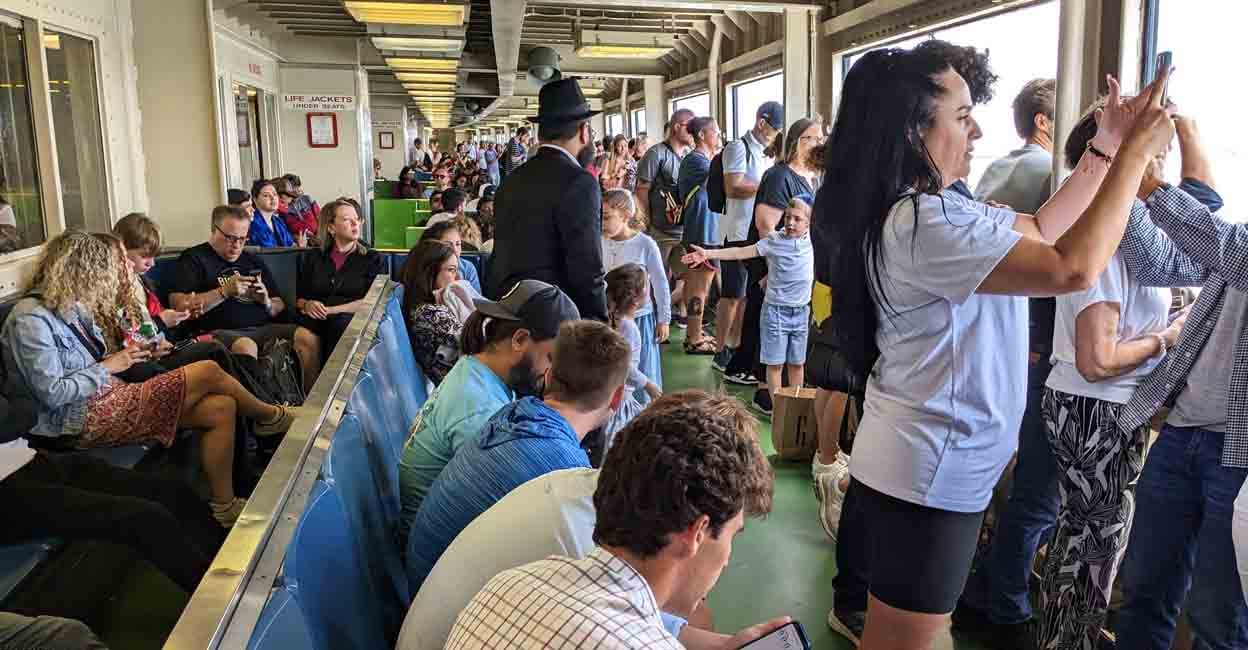
To me the Staten Island Ferry is a slice of real New York, the New York that’s more than the skyscrapers, the glitter and the fanfare. It’s the New York of the working class, the less privileged woman and man, the humble and the ordinary. That it’s free, represents, in its own way, not capitalism’s mercy but what remains of the shining humanism that once illuminated the American Declaration of Independence. Thank you, Staten Island Ferry, for being there. May you traverse the New York Bay – free – for another thousand years!
Paul Zacharia is a well-known Indian writer and columnist.




